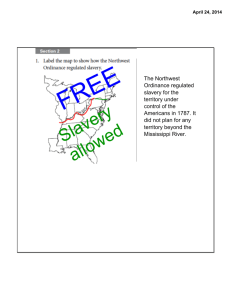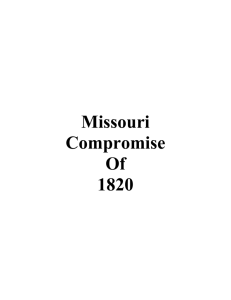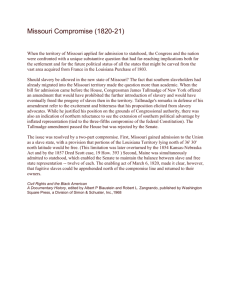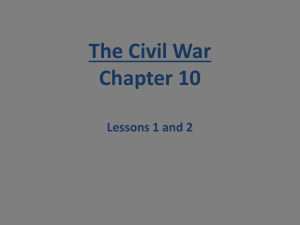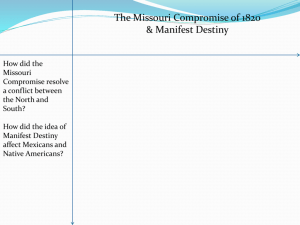The Missouri Compromise Background Reading
advertisement
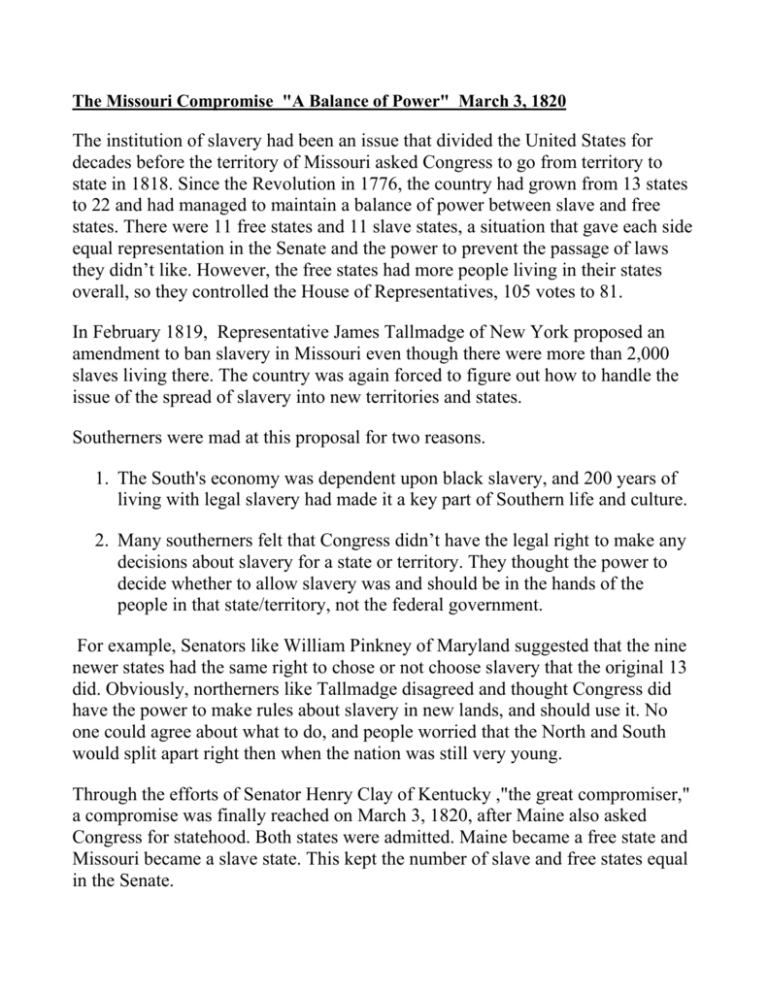
The Missouri Compromise "A Balance of Power" March 3, 1820 The institution of slavery had been an issue that divided the United States for decades before the territory of Missouri asked Congress to go from territory to state in 1818. Since the Revolution in 1776, the country had grown from 13 states to 22 and had managed to maintain a balance of power between slave and free states. There were 11 free states and 11 slave states, a situation that gave each side equal representation in the Senate and the power to prevent the passage of laws they didn’t like. However, the free states had more people living in their states overall, so they controlled the House of Representatives, 105 votes to 81. In February 1819, Representative James Tallmadge of New York proposed an amendment to ban slavery in Missouri even though there were more than 2,000 slaves living there. The country was again forced to figure out how to handle the issue of the spread of slavery into new territories and states. Southerners were mad at this proposal for two reasons. 1. The South's economy was dependent upon black slavery, and 200 years of living with legal slavery had made it a key part of Southern life and culture. 2. Many southerners felt that Congress didn’t have the legal right to make any decisions about slavery for a state or territory. They thought the power to decide whether to allow slavery was and should be in the hands of the people in that state/territory, not the federal government. For example, Senators like William Pinkney of Maryland suggested that the nine newer states had the same right to chose or not choose slavery that the original 13 did. Obviously, northerners like Tallmadge disagreed and thought Congress did have the power to make rules about slavery in new lands, and should use it. No one could agree about what to do, and people worried that the North and South would split apart right then when the nation was still very young. Through the efforts of Senator Henry Clay of Kentucky ,"the great compromiser," a compromise was finally reached on March 3, 1820, after Maine also asked Congress for statehood. Both states were admitted. Maine became a free state and Missouri became a slave state. This kept the number of slave and free states equal in the Senate. However, the Missouri Compromise tried to create rules for slavery in future states and territories, too. It created a line at the 36 30 longitude line, and stated that all territory from the Louisiana purchase north of this line would be “forever free”, and the land south of the line Could be slave land. A strange choice: The Missouri Compromise line looks strange because it is at the southern border of Missouri. So, even though all new states north of the land were going to be free, Missouri itself was a new slave state north of the line. Confused? Look at the map and it will be clear. Fascinating Fact: The Missouri Compromise was repealed by the 1854 KansasNebraska Act and declared unconstitutional in the 1857 Dred Scott decision. More on all this later. Post Reading: On another piece of paper, answer the following questions. 1. What did the North get in this compromise? 2. What did the South get in this compromise? 3. Who do you think got the better side of this deal? 4. Look back on what you said at the start about compromises. Do you think this was a good compromise to make? Why or why not?


